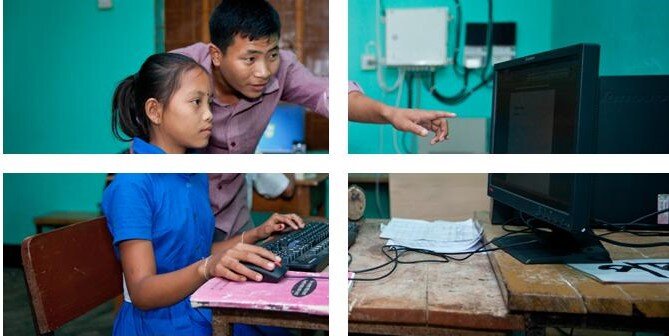ICT: a key to national development

TEHRAN - World Telecommunication and Information Society Day is celebrated annually on May 17 to help raise awareness of the possibilities that the use of the Internet and other information and communication technologies (ICTs) can bring to societies and economies, as well as ways to bridge the digital divide.
The day marks the anniversary of the signing of the first International Telegraph Convention and the creation of the International Telecommunication Union (ITU).
As a key technology in order to achieve national development goals, information and communication technology (ICT) has always played a pivotal role in Iran.
Generally, the use of ICT in the contemporary world is expanding at an increasing speed and has transformed all aspects of human life in its different forms.
Statistics show that the distance between countries that use information and communication technology as the axis of development of their national programs and countries that do not use it properly is increasing sharply.
Status of ICT in Iran
The Ministry of Information and Communication Technology is the highest authority in the field of ICT in the country. All activities related to the information and communication technology industry are directly related to the ministry.
According to ICT Minister Issa Zarepour, the government pays special attention to plans and policies in this sector in order to maximize the use of ICT to facilitate people's lives.
The successful designing, building, and launching of a satellite show the growth of the national technology and scientific power of a country.
Space technology has been considered a tool to expand prosperity, peace, scientific-cultural development, and economic progress in human societies.
Different nations of the world exploit this technology in some way based on their capacity, capabilities, and efforts.
Currently, 13 universities and a research institute affiliated to the Ministry of Science, Research and Technology are offering aerospace majors, thus Iran has a high capability in training specialists and experts in the aerospace sector and is a leading country in the region.
Zarepour said in April that more than 91 percent of villages with a population of over 20 households across the country have now access to the internet via the national information network.
The villages with above 20 households having access to the internet have increased from 80 percent to 91 percent since the incumbent administration took office in August 2021, said the minister.
Access to telecommunication services in rural areas of the country had improved over the period as the overall number of villages with access to communication services rose to 52,182, around 93 percent of all villages, while 47,837 villages had access to home landline services.
Moreover, the number of Iranian mobile users reached nearly 135.890 million, according to the CRA which put the mobile phone penetration rate in the country at 161.67 percent.
The figures showed, however, that fixed broadband adoption in Iran had stalled at 14 percent with nearly 11.921 million customers having access to the Internet via those services.
This statistic shows that fixed broadband internet has grown by less than 2 percent compared to last year and mobile internet has experienced a growth of 10 percent. However, it can be said that the speed of mobile internet expansion is 5 times the speed of fixed internet.
Digital investment worldwide
Over the past decade, the connectivity challenge has become more complex and demanding. Bringing everyone online is no longer enough.
Meaningful connectivity – the possibility to enjoy a safe, satisfying, enriching, productive, and affordable online experience – is the new imperative. For least-developed countries (LDCs), this remains a major challenge.
The digital divide between LDCs and the rest of the world shows little sign of narrowing. The risk is all too evident. As the world becomes increasingly adept at leveraging the Internet for value creation, LDCs risk falling further behind.
This year, World Telecommunication and Information Society Day (WTISD) focuses on “Empowering the least developed countries through information and communication technologies.”
The International Telecommunication Union (ITU) calls on the public and private sectors to make pledges for universal connectivity and digital transformation in these countries through its Partner2Connect Digital Coalition.
Midway through the agenda to fulfill the UN Sustainable Development Goals (SDGs) by 2030, the least developed countries (LDCs) remain the world’s greatest untapped resource, whose needs must be addressed to achieve the SDGs.
Investment in these young, vibrant countries can drive sustainable growth for generations. Together, let’s make 2023 a year of progress for digital transformation in the least developed countries.
In 2022, an estimated 407 million people in the least developed countries (LDCs) were using the Internet, accounting for 36 percent of the population, compared to 66 percent globally.
The 720 million people still offline in LDCs account for 27 percent of the global offline population, even though the LDC population accounts for only 14 percent of the world’s population.
